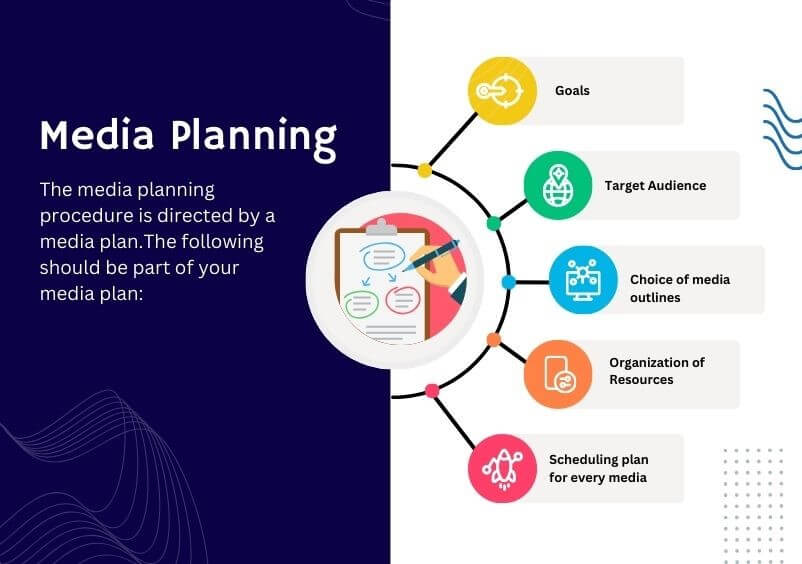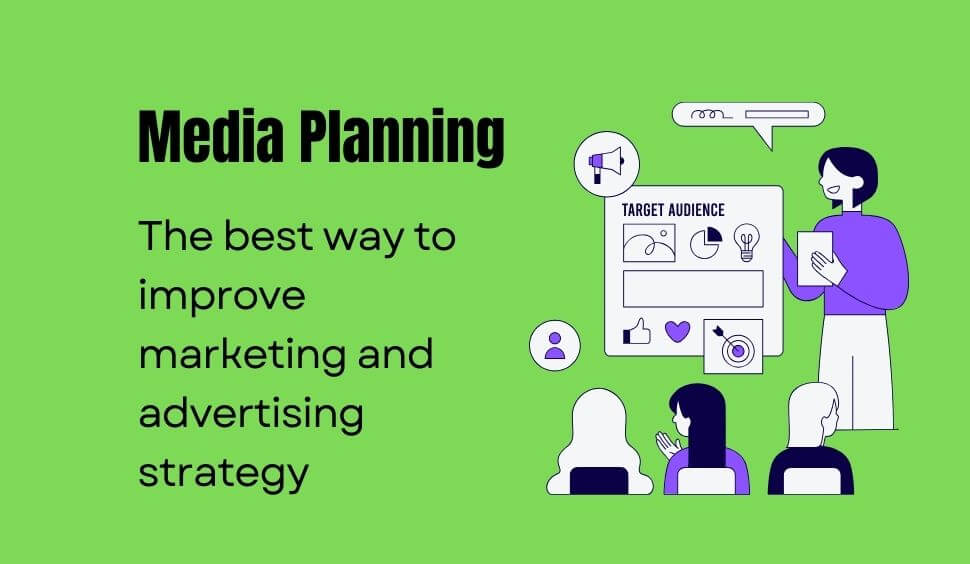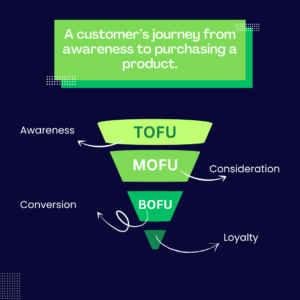In today’s tough online competition, planning your media strategy is crucial for business success. By carefully creating and sharing different types of content like images, videos, and podcasts, companies can boost their brand and make more sales. Managing all this content can be tricky, so having a good plan is essential. It helps you pick the best places to share your content and see how well it’s doing. With the right plan, businesses can save time, make smarter choices, and stand out in the crowded digital world.
What is Media Planning?
Media planning is all about figuring out the best way to show your ads to the right people at the right time. By understanding why you’re making your plan, you can make sure your ads reach as many people as possible. Marketers look at who they want to reach, where they can reach them, and what ads will work best. This helps them choose the smartest way to get their message across.

The media planning procedure is directed by a media plan. Consider it a guide for your campaigning endeavors. The following should be part of your media plan:
- Goals
- Targeted audience
- Choice of media outlets
- Allocation of Resources
- Scheduling plan for every media outlet selected
Each will be covered in greater detail in the instructions that follow.
Benefits of Media Planning
In today’s busy marketing world, having a media plan is super important. It’s like a roadmap for your advertising efforts. This plan includes things like what you want to achieve, who you’re trying to reach, and which channels to use. Media planners, who are experts in this field, work with advertisers to make sure their ads are seen by the right people at the right time. They use data about the brand and the audience to decide where and when to place ads for the best results. It’s all about getting the message out there in the most effective way possible. Besides, there are some other benefits that you can get from media planning, including:
1. Better understanding of the target audience through audience segmentation and analysis
2. Choosing when and how often to publish and promote your media and content
3. Conducting tests and analysis with the plan for better optimization
4. Keeping up with the latest media trends and technology
5. Media planning allows you to create an optimized campaign that improves ROI
Types of Media
To create an effective media strategy for your brand, you must understand the three main types of media: paid media, earned media, and owned media.
Paid Media
Paid media refers to advertising that a business pays for viewers to see. It covers things like paid search results on search engines, advertisements on websites, and sponsored postings on social media. Businesses can use it to reach a wider audience by purchasing advertising space.
Earned Media
Earned media refers to publicity or exposure that a company gains through promotional efforts, but without directly paying for it. It includes mentions, shares, reviews, or features about the company or its products/services in news articles, social media posts, blog posts, or word-of-mouth recommendations. Earned media is often seen as more credible and trustworthy because it comes from independent sources or satisfied customers, rather than paid advertisements.
Owned Media
Owned media is content a company owns and controls, like its website, social media pages, and emails. It’s content they make and share themselves, without paying or relying on others.
How to Create a Media Plan with 7 Steps
Selecting Media Goals and Objectives
Before diving into a marketing campaign, it’s crucial to set clear goals and objectives. These goals can vary depending on different departments or aspects of the business, such as boosting revenue for the sales team or increasing brand recognition for the marketing team. Understanding the main goal helps shape the campaign’s direction and messaging.
Once the goals are established, media planners research to understand market trends and competitors’ strategies. This research provides insights into what has worked well in the past for similar brands and goals. For example, if competitors have found success with native ads while a brand has focused on email campaigns, it might be time to adjust the plan.
Identifying Target Audience
It’s important to determine your target audience before you begin making advertisements.
To make sure your media campaign reaches the individuals most likely to be interested in your product, service, or content, create a perfect buyer persona.
When creating your buyer personas, focus on these crucial characteristics:
Demographics: Identity, location, age, and income
Background: Employment, professional route, and way of life
Identifiers: Social media networks and communication inclinations
Objectives: principal, secondary, individual, and occupational
Challenges: The obstacles standing in the way of accomplishing their objectives
Conducting Competitive Research
Conducting competitive research involves gathering information about other companies or businesses that operate in the same industry or offer similar products or services. This research aims to understand the strategies, strengths, weaknesses, and market positioning of competitors. By analyzing competitors’ activities, such as their marketing tactics, product offerings, pricing strategies, and customer engagement approaches, businesses can gain valuable insights to inform their decision-making processes. Competitive research helps businesses identify
opportunities for improvement, stay ahead of market trends and develop effective strategies to differentiate themselves and succeed in a competitive environment.
Determining Budget
Setting the right budget is crucial for achieving desired results with advertising, but it can feel uncertain without proper information. By understanding market trends and using data from benchmark studies, businesses can make more informed budgeting decisions. Utilizing insights from such studies can help alleviate budgeting anxiety and guide the allocation of advertising funds across different platforms based on average monthly spending distributions.
Creating Media Schedule
To ensure your ads reach your target audience effectively, create a media schedule outlining when and how often your ads will appear. This involves establishing a timeline for your ad campaign, known as the media flight, and allocating a budget to it. Use competitive research to identify the best timing for your campaign by analyzing trends among competitors and media owners. Consider your campaign objectives when determining the duration of your media flight and the frequency of your ads. Planning ahead allows for adjustments along the way to optimize your campaign’s performance.
Putting Media Planning into Action
After finishing the above steps, it is now time to put media planning into action. While executing your media plan, keep track of your progress. Remember, you can always adjust your plan as needed because the marketing industry is constantly changing. Knowing when to adapt your approach is crucial for success.
Analyze and Optimize
A crucial aspect of developing a media planning strategy is to constantly monitor, track, and analyze performance. Marketing campaigns need ongoing management rather than being left on autopilot, enabling teams to spot opportunities for improving ROI in real time. This proactive approach empowers teams to make adjustments based on campaign performance, ensuring maximum effectiveness.
Conclusion
A well-executed media planning strategy is essential for achieving marketing objectives and maximizing return on investment (ROI). By carefully crafting a plan that considers the target audience, goals, budget, and competitive landscape, businesses can effectively reach their intended audience and drive desired outcomes. However, success doesn’t end with the implementation of the plan; continuous monitoring, tracking, and analysis are critical for identifying areas of improvement and optimizing performance in real time. With a proactive approach to media planning, businesses can adapt to changing market conditions and ensure the success of their marketing campaigns.





